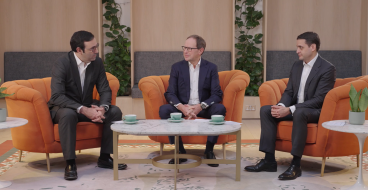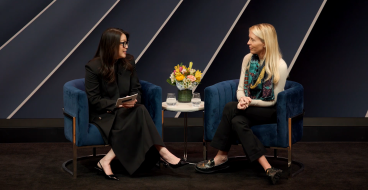How Hedge Funds Can Be Built to Last

J. Tomilson Hill
There’s a scene in Monty Python and the Holy Grail where two men are collecting the bodies of villagers who have died on a wooden cart. One villager hauls an old man over his back and attempts to dispose of the old man, despite the old man’s protests: “I’m not dead yet!”
It’s a scene that comes to mind as I think about the persistent attacks on the hedge fund industry over the last three years. Like the man in Monty Python, we’ve all heard the dire, premature predictions of our demise. After all, the critics point out, over 10% of all hedge funds go out of business each year.
There are several reasons for this, but one I’ve seen over and over is that hedge funds in particular tend to be products of a founder, tied inseparably to that person for both fundraising and strategy. As a result, the business itself doesn’t outlive the founder. It’s a cruel irony that these organizations, with such talent and substantial assets under management (AUM), are unable to create going concern value.
“It’s a cruel irony that these organizations, with such talent and substantial assets under management (AUM), are unable to create going concern value.”
However, I believe it’s not only possible to build hedge fund businesses with going concern value, it’s important to do so.
To understand the path forward, consider lessons from another field: philanthropy. Here, too, the challenge is to ensure your values and insights are reflected in your legacy. I’m reminded of the story of one big philanthropist who very nearly didn’t get his way. When he died, he left behind a huge gift with just one condition: that it be used for “the increase and diffusion of knowledge among men.” But before anyone could agree on what that meant, the recipient of the gift invested it in bonds issued by the state of Arkansas — which promptly defaulted, wiping it all out.
The donor was James Smithson. The recipient was Congress. Smithson’s gift would become what we know today as the Smithsonian Institution (where I sit on the Investment Committee). But not many people know that Congress first lost his money and had to appropriate from the budget to actually create the Smithsonian.
We got lucky with the Smithsonian. But over and over again, we hear about foundations that have ceased to reflect the donors’ intent or values.
In philanthropy, there is always a risk that the institutions you build spend your money after you’re gone in ways you never intended. Not so with hedge funds. The mission for a hedge fund will always remain the same: shield from risk and achieve attractive returns for those individuals, institutions, and nations that have entrusted you with their savings.
The means of achieving that goal will require ongoing reinvention. Therefore, institutions capable of constant innovation are the only ones that can last in a world of constant change.
In other words, if you want your values reflected in your philanthropy, you have to give it away while you’re alive.
But if you want your values reflected in your business, make it a going concern.
And making hedge fund businesses a going concern depends less on personalities and individual genius, and much more on innovation and constant client focus.
When I started in mergers and acquisitions (M&A) in the early 1970s, everyone advised me against it because it seemed a backwater. But I saw that corporate finance was overdue for a major modernization – and M&A would be at the forefront. From M&A to private equity, and from private equity to hedge funds, I’ve been through three waves of finance. Without question, there will be a fourth, a fifth, and a sixth wave. To catch the next one, we need hedge fund businesses that can innovate and diversify.
But innovation means little without partnerships that put clients at the center and adapt to their needs. At Blackstone Alternative Asset Management (BAAM), we’ve been willing to give money back to our investors when we think the opportunity has diminished. We have closed strategies down when they have outlived their usefulness. We are constantly cannibalizing our own business model. We use our scale to negotiate fees down and build customized solutions for our clients.
Putting clients and partners first should not be a revolutionary idea. My experience has shown that, to create a hedge fund business that lasts, we need to focus relentlessly on what clients want – and be flexible enough to innovate in the right ways so they get it. Short-term returns should never come at the expense of long-term partnerships.
After talking about this issue at Institutional Investor’s lifetime achievement awards ceremony, I received a lovely note from Morgan Stanley’s Ed Keller, which had a wonderfully succinct reminder: “Money is not a moat. Client solutions and relationships are a moat.”
When I took over BAAM, it was a tiny division with eight million dollars in revenue and just eight people. Today, the proudest achievement of my professional life is not BAAM’s AUM, but rather that BAAM will last far beyond my lifetime.
“Today, the proudest achievement of my professional life is not BAAM’s AUM, but rather that BAAM will last far beyond my lifetime.”
Through constant innovation, diversification, and strong partnerships, you can build institutions that don’t depend on one personality or one strategy – institutions that aren’t nearly dead yet, but can serve clients well today, and tomorrow.
J. Tomilson Hill is the Vice Chairman of Blackstone and the President & Chief Executive Officer of Blackstone Alternative Asset Management



